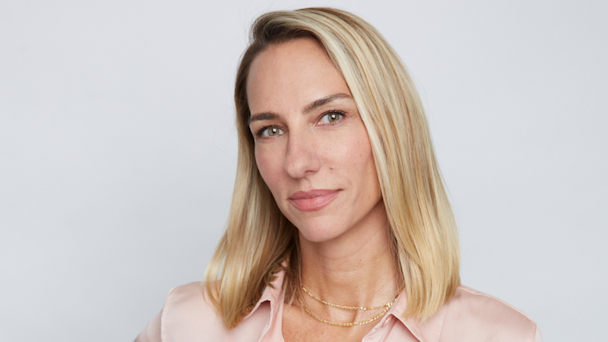Brands, here’s how to tap into the hidden community within your loyalty program
We are currently in the grips of a perfect storm that is forcing brand leaders to focus on loyalty over reach. Kate Watts of creative consultancy Long Dash explains how brands can succeed.

Kate Watts, CEO, Long Dash
More stringent privacy regulation and the end of cookies is weakening ad retargeting technology that for so long has helped businesses find new customers with minimal effort. On top of that, executives decreasing ad spend in anticipation of economic headwinds are accelerating the shift away from programmatic media.
Efforts to drive one-time sales are less sustainable than bringing new audiences deeper into the fold for engagement, feedback, and patronage. It’s time to reimagine loyalty programs.
Loyalty is defined by audiences making a brand a trusted part of their life. This could entail visiting an online community in-between meetings or reading a newsletter with your morning coffee. These loyal relationships yield more engagement, brand ambassadorship and revenue. The surest way to do this is to make community and co-ownership central to loyalty programs. And yet, many loyalty programs resemble buying friends, rather than deepening brand affinity.
Advertisement
Loyalty programs have never been about loyalty
Brands are keen on having loyalty programs – a 2021 article from Harvard Business Review claimed that there are over 3 billion customers enrolled in them nationwide – but the strategy behind them can be misguided. They reward customers with products and discounts for repeat purchases, product reviews and referrals. As author Ana Andjelic writes: “This sort of bribery usually attracts the least loyal – and least valuable – audience who is mostly interested in the positive transaction utility and has a low brand investment (once they claim a reward, they can unfollow the brand).”
A 2020 survey from McKinsey found that 30% of free loyalty program members spend more on a brand immediately after subscribing (compared to 60% for members of paid loyalty programs). But two-thirds of consumers trying a new brand this year subscribed due to a lower price. Most loyalty programs boost short-term numbers but socialize a transactional dynamic. They miss out on the chance to learn anything insightful about audiences, unearth unexpected revenue streams, glean ideas for product development, or lower marketing expenses.
Discounts and rewards require widespread adoption so that the increase in purchases significantly exceeds the freebies. When the incentive disappears, or there are hurdles to redeeming rewards, the program can backfire. Research from the Wharton School shows that loyalty program members were likely to be more upset if they experienced challenges like stockouts, shipping delays and product damage than non-members.
Advertisement
Come for the perks, stay for the community
True loyalty is activated through peer-to-peer connection. It’s a shared bond built on reciprocity, mutual interest and shared experiences with trust as its center. Human beings, it should never be forgotten, are social creatures. As such, the cultivation of community must be a core pillar of any loyalty program, if it is to be successful. Luckily, consumers are ready for this. Our national study shows more than half of consumers said they want to feel more connected to a community of people who share their affinity to a particular brand. That feeling is even stronger for millennials and generation Z, 71% of whom crave this connection, according to research from Long Dash.
The collectivist mindset improves participation for brands. Brands are after zero-party or first-party data to understand audiences, but fans from a true loyalty program can offer what we call ’1:1 data’. This phrase refers to instances when mutually beneficial insights are offered freely with the shared goal of improving experiences within a particular community, while simultaneously building a stronger brand. Bringing fans closer would be a simple activation of latent communities, rather than an overhaul for already well-designed loyalty programs.
Starbucks’ Odyssey program recently did exactly this by adding a web3 offering to its loyalty program, allowing its 25 million members to become part of a virtual, blockchain-based community. Through the program, Starbucks customers can collect and buy NFTs when they engage in activities alongside other fans of the brand. These NFTs can be sold on a secondary market to earn profits for token-holders, and points gained from them can be traded for experiences ranging from barista classes to an all-expense paid trip to a Starbucks coffee farm in Central America.
Suggested newsletters for you
Prioritizing quality over quantity
While large membership numbers support data-gathering at scale, brands can rework loyalty programs to enlist the highest-quality data from true loyalists. Patagonia’s Pro Community program, for example, offers a range of special benefits to outdoor professionals and advocates. Membership in the prorgram requires an application, annual renewal, and adherence to a set of community guidelines. In creating trust and filtering out less-serious enthusiasts, Patagonia has cultivated a community of deeply invested people who would be likely to willingly share insights to improve campaigns and products.
As is the case in any relationship, building trust takes time. Using loyalty programs to foster a sense of community and co-ownership among members will provide them with a far better reason to be loyal than a quick discount would. After all, true loyalty is earned, not bought.
Kate Watts is the CEO of Long Dash. For more, sign up for The Drum’s daily US newsletter here.
